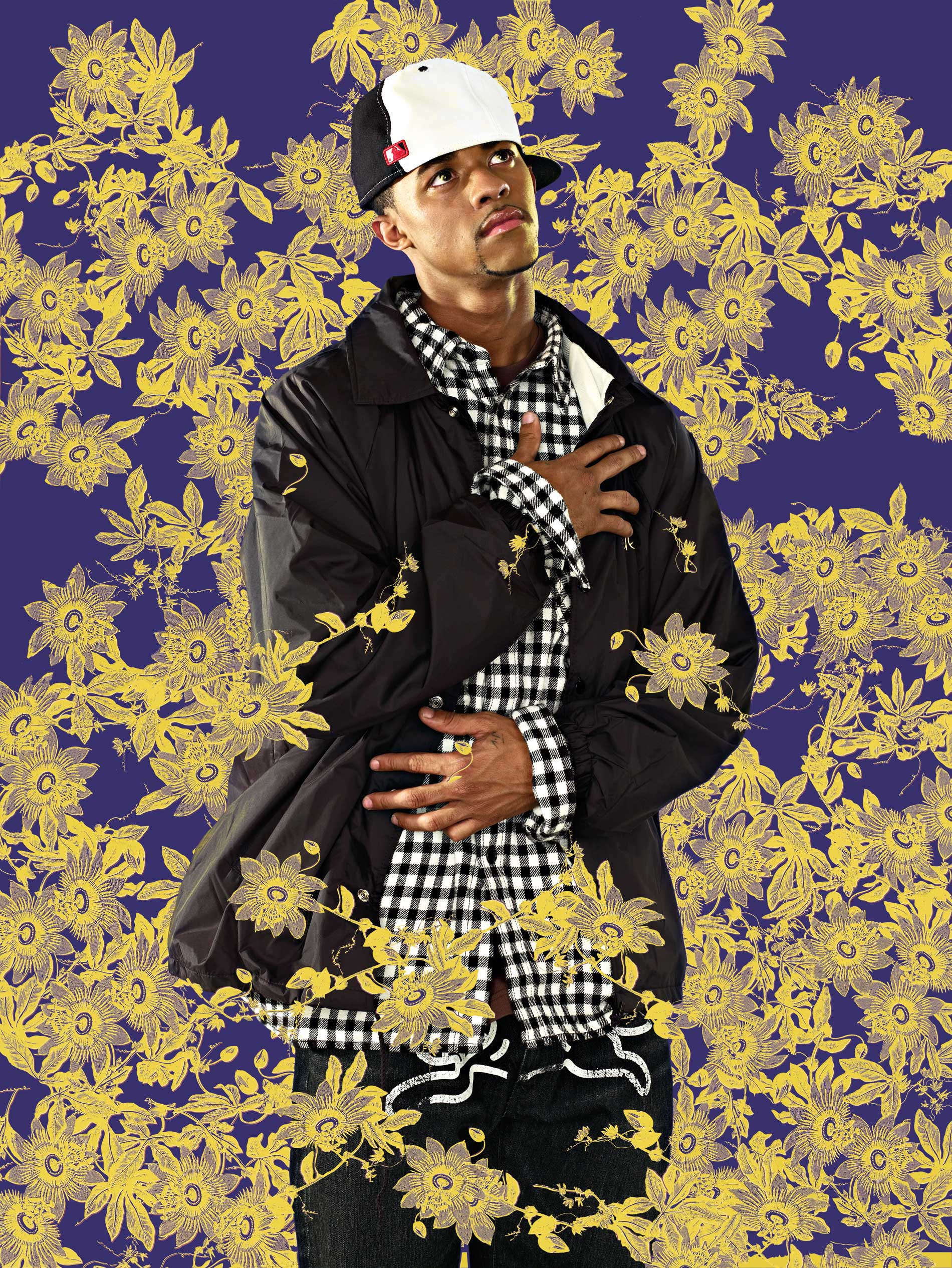In 2009 Deitch Projects presented Black Light, an exhibition of photographs by Kehinde Wiley that thrusts the black male image, captured by means of light manipulation and digital technology, into focus. This shuttle of Wiley’s artistic process reveals an integral component of his studio practice rarely seen while remaining, uniquely, Kehinde Wiley portraiture.
Enlisting the technical tenor of Hype Williams’ hip-hop videos from the 90 ‘s, Wiley saturated his consummately styled subjects of Fulton Street Mall pedigree–caps flipped backward, wearing gear of New York legend–in “super rapturous light.” To transcendental and beatific effect, such illumination proffers a new measure of Wiley’s technical abilities, so that the medium of photography propels each time to the point before paint consumes canvas–the moment when flesh, at its three dimensional, truth-telling, reveals scars long ago enacted. Browned fingernails, questioning red-glazed eyes and voluptuously glossed, cigarette-charred lips heighten what, for some, is no longer visible: a vulnerable microcosm of our metropolis—a black light. Through the 17 photographs on display, Wiley produced an intimate study of embattled psychologies whose adherents were at once flawed and majestic, canonized and misunderstood.
Brilliant patterns extracted from 50’s home decor magazines and Martha Stewart’s 1999 home collection embrace sitters in a kind of religious shroud collapsing fore and backgrounds, spatial comprehension and the black male gaze into a cacophonous, unsettling harmony.
In an insightful essay for the book that accompanied Black Light, Brian Keith Jackson writes, “In our fast paced, technological and reality TV existence, we would like to believe that we have a handle on, if not control of time and our place within it. But time is its own keeper, we are merely the benefactors of its glow. In that, what we can do is capture and cultivate a moment, a movement, a setting, something to refer to when time does what it will ultimately do–tick on… These photographs deliver on that very promise.”

















